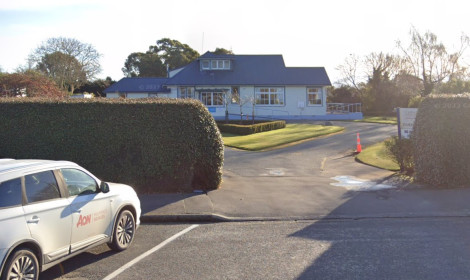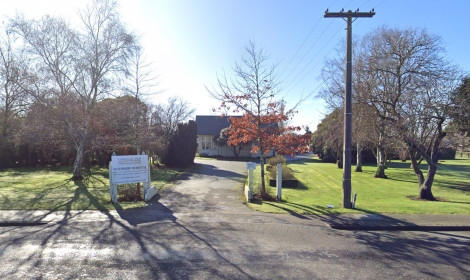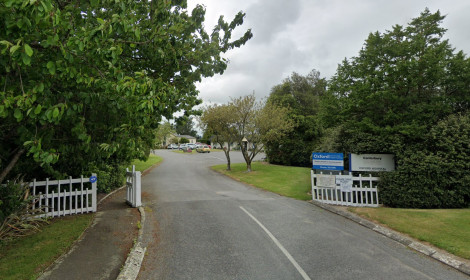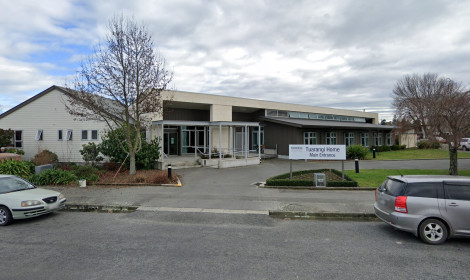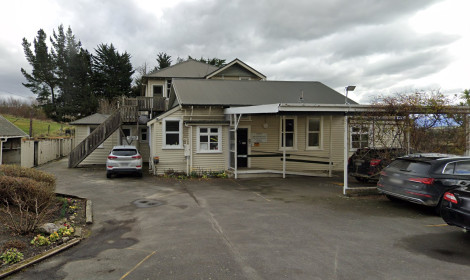Canterbury
Information about hospitals and other health services in Canterbury and Chatham Islands.

Other hospitals and health centres
Other Canterbury healthcare providers
Find health centres and other healthcare providers on Healthpoint.
Who can help
Select the option that best describes your needs.


Life-threatening emergencies
In any critical or life-threatening emergency call 111 for an ambulance.
Critical or life-threatening emergencies include:
- chest pain or tightness (they may also feel pain or tightness in their arm, jaw, neck or tummy)
- difficulty breathing
- choking
- sudden weakness or difficulty talking (this may be a stroke )
- fainting or unconsciousness (not being awake)
- severe pain
- severe bleeding or bleeding that won’t stop.
- serious allergic reaction (anaphylaxis)
- severe burn.
You can also go straight to an emergency department (ED).
If it is not life-threatening
If you are not experiencing a life-threatening emergency, but cannot wait to see your doctor or usual healthcare provider (or you do not have one) go to an after hours or urgent medical centre. They can help with most medical problems and accident care including:
- bad cuts that may need stitching
- sprains or minor bone breaks as many have x-ray available on-site
- minor head injuries
You do not need an appointment but might have to wait.
Find your nearest accident and urgent medical centre — Healthpoint (external link)
Call Healthline for free
Healthline provides a 24 hour, 7 days a week, free over-the-phone health service you can call for trusted health advice, information and treatment from professional healthcare providers.
Go to your usual GP or use an online doctor
If you are enrolled with a general practice (GP), their doctors, nurses and other team members can look after most of your healthcare. Same-day appointments may be available.
If you cannot wait to see your doctor or usual healthcare provider (or you do not have one) you can book a same-day appointment through an online doctor.
These appointments usually take place through a video app or a phone call. They can prescribe medicine and send prescriptions to your nearest pharmacy.
Go to an after hours or urgent medical centre
If you are not experiencing a life-threatening emergency, but cannot wait to see your doctor or usual healthcare provider (or you do not have one) go to an after hours or urgent medical centre. They can help with most medical problems and accident care including:
- bad cuts that may need stitching
- sprains or minor bone breaks as many have x-ray available on-site
- minor head injuries
You do not need an appointment but might have to wait.
Find your nearest accident and urgent medical centre — Healthpoint (external link)
Go to a pharmacy
Get advice on medicines and common issues like:
- coughs and colds
- bladder or eye infections
- minor cuts and grazes
- emergency birth control.
They can suggest over-the-counter treatment, fill prescriptions, and some give immunisations. You do not need an appointment.
Emergency contraception
You can get the emergency contraceptive pill over the counter at most pharmacies or from your usual GP or healthcare provider. If you are 22 or under, you can get it free from a Sexual Wellbeing Aoteroa clinic. It is is most effective if you take it within 24 hours after unprotected sex, but it can prevent pregnancy if taken up to 3 days after.
Find a pharmacy that provides the emergency contraceptive pill — Healthpoint (external link)
Call Healthline for free
Healthline provides a 24 hour, 7 days a week, free over-the-phone health service you can call for trusted health advice, information and treatment from professional healthcare providers.
Go to a pharmacy
Get advice on medicines and common issues like:
- coughs and colds
- bladder or eye infections
- minor cuts and grazes
- emergency birth control.
They can suggest over-the-counter treatment, fill prescriptions, and some give immunisations. You do not need an appointment.
Go to your usual GP or use an online doctor
If you are enrolled with a general practice (GP), their doctors, nurses and other team members can look after most of your healthcare. Call to get advice or make an appointment.
If you cannot wait to see your doctor or usual healthcare provider (or you do not have one) you can book an appointment through an online doctor.
These appointments usually take place through a video app or a phone call. They can prescribe medicine and send prescriptions to your nearest pharmacy.
Find information online
There are lots of New Zealand health websites that can help with generic health concerns such as symptoms and treatments.
Search this website (internal link)
Urgent mental health support
If you, or someone you know, needs immediate help:
- call 111
- go to your nearest emergency department (ED)
- contact your local mental health crisis assessment team.
Talk to someone in person
Book an appointment with your usual GP or healthcare provider, or talk to a trusted healthcare professional. They can help you through next steps, including referrals to mental health services.
Māori, Pacific People and 12 to 24-year-olds can access free mental health services with no referral. Visit the Access and Choice website to find out how.
Call a helpline
Free call or text 1737 24 hours a day, 7 days a week to talk with a trained counsellor. This service is free and confidential.
Visit a mental health website
depression.org.nz provides information, validation and practical advice for those navigating depression and anxiety.
The Mental Health Foundation has lots of advice on how to find support for different circumstances as well as information about different mental health conditions.
Aroā Wellbeing is a resource hub with mindful tools created by rangatahi for rangatahi to support wellbeing.
depression.org.nz (external link)
In an emergency
If you are concerned about yourself or your pēpi contact your midwife or doctor straight away.
If you do not have a midwife or doctor, go to the emergency department if you are experiencing any of these symptoms:
- heavy bleeding (soaking pads)
- passing blood clots
- having pain.
Pregnancy advice
Talk to your midwife or doctor if you have any concerns or questions. If you do not have a midwife, you can search for one on the ‘Find your Midwife’ website. The New Zealand College of Midwives website also has lots of information and resources.
If you do not have a midwife or doctor, you can call Healthline. Healthline provides a 24 hour, 7 days a week, free over-the-phone health service you can call for trusted health advice, information and treatment from professional healthcare providers.
Mental health support
Talk to your midwife or doctor if you are worried about your mental health. You can also free call or text 1737 24 hours a day, 7 days a week to talk with a trained counsellor. This service is free and confidential.
Emergency contraception
You can get the emergency contraceptive pill over the counter at most pharmacies or from your usual GP or healthcare provider. If you are 22 or under, you can get it free from a Sexual Wellbeing Aoteroa clinic. It is is most effective if you take it within 24 hours after unprotected sex, but it can prevent pregnancy if taken up to 3 days after.
Find a pharmacy that provides the emergency contraceptive pill — Healthpoint (external link)
If your pregnancy is unplanned
If you are thinking about having an abortion, DECIDE has the information you need about abortion services, abortion care, and how to find a provider near you.
Rural communities look out for each other — but there are still plenty of ways to get the help you need.
In an emergency
Always call 111 if someone is seriously unwell, injured, or in danger. Our emergency services will assess the situation and send the right type of help.
This may include:
- Sending an ambulance
- Giving advice about other care options
Ambulance services in rural communities
Ambulance services are an important part of health care in rural New Zealand. In many areas, the ambulance may be your first, or only, emergency health provider. Hato Hone St John and Wellington Free Ambulance respond to emergencies across the country, providing care at the scene and transporting people when needed.
Paramedics can assess and treat people on the spot, and in some situations, they may be able to treat you at home without taking you to hospital.
In smaller or remote communities, trained volunteer ambulance officers or first responders may arrive first to provide initial care until the ambulance gets there. These volunteers are local community members who are trained to help in emergencies.
If you are unsure what to do, call 111. The team will assess your situation and make sure the right help is sent to you.
Air ambulance services
In some parts of Aotearoa New Zealand, air ambulances — helicopters or fixed-wing aircraft — are used to get people the care they need when road access is limited or when specialist care is urgently required. These services are coordinated by clinical teams who assess each situation and send air support if needed.
Air ambulances are staffed by highly trained medical teams and are equipped to care for people with serious or complex conditions. They are often the fastest way to reach hospital care from remote or isolated locations.
For advice
Call Healthline for free
Healthline is a free service you can call 24 hours a day, 7 days a week. You will speak with trained health professionals who can give trusted advice, information, or help you decide what to do next.
Call 0800 611 116 (external link)
National Poisons Centre helpline
Call 0800 764 766 (0800 POISON) for free, 24/7 advice about:
- medicines
- chemicals
- bites and stings
- plants and fungi.
Call 0800 764 766 (external link)
Go to a pharmacy
Some rural pharmacies can offer a wide range of services — not just dispensing medicine. They may also help with:
- minor infections (like bladder or eye infections)
- coughs, colds, and sore throats
- cuts, grazes, or minor burns
- mole removals and minor procedures
- emergency contraception.
Many pharmacies can also give immunisations and offer over-the-counter advice with no appointment needed. Find your nearest pharmacy — Healthpoint (external link)
Doctor appointments
Ka Ora Telecare for rural communities
Ka Ora Telecare is a free after-hours video and phone health service for those who live in or are visiting a rural location. It is free to speak to a nurse, and all appointments are free for tamariki under 14 years old.
Call 0800252 672 (external link)
Other online GP providers
If you cannot wait to see your usual healthcare provider (such as you GP) or you do not have one, you can book a same-day video or phone appointment with an online doctor.
They can prescribe medicine and send prescriptions to your local pharmacy.
Support for mental health
Rural Support Trust
Rural Support Trust (RST) are a nationwide network, run by local people, to help farming families and rural communities. Talk with someone who understands rural life and can provide support, advice, or practical help.
Call 0800 787 254 (0800 RURAL HELP) (external link)
1737 — Need to talk?
Call or text 1737 any time, day or night, to talk with a trained counsellor. It is free and confidential.
Online and over-the-phone healthcare
Call Healthline for health advice. Find out how to have a GP or hospital consultation over the phone. Learn about online rural healthcare.
Find a service in Canterbury
Images of Darfield Hospital, Ellesmere Hospital, Oxford Hospital, Tūārangi Home, and Waikari Hospital © Google.





